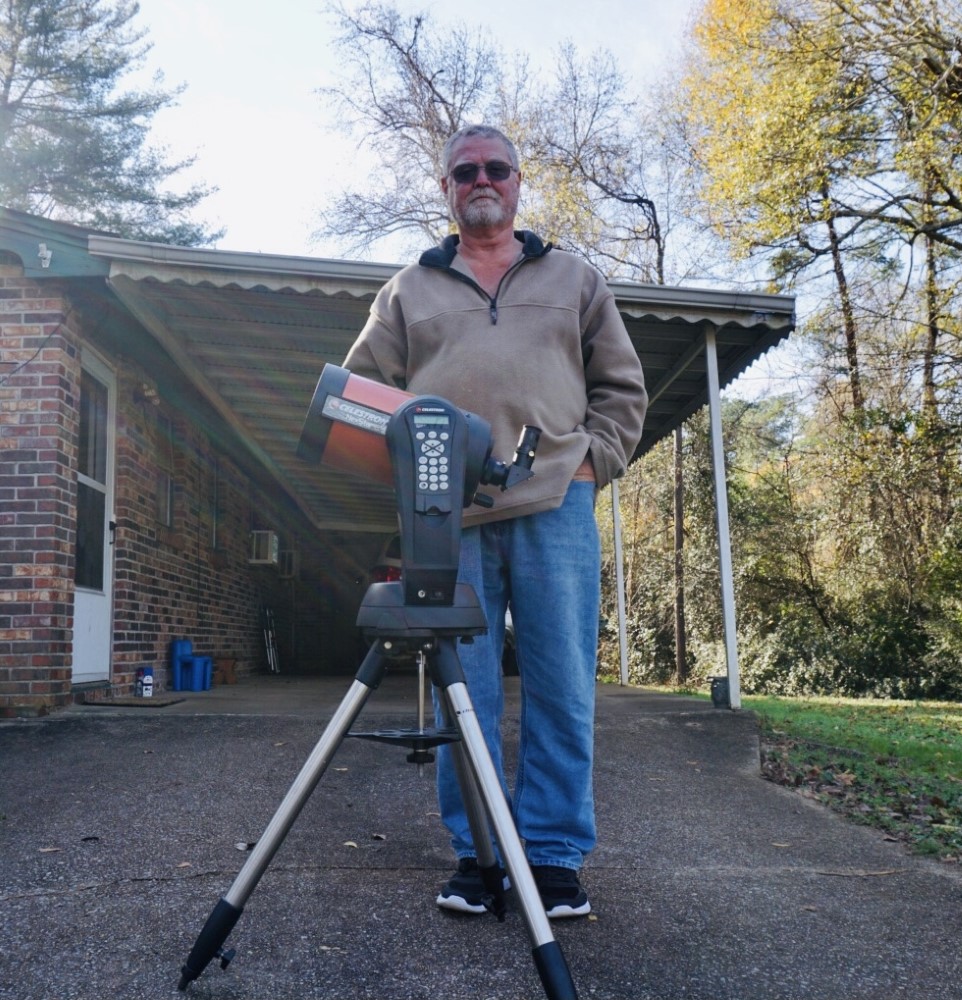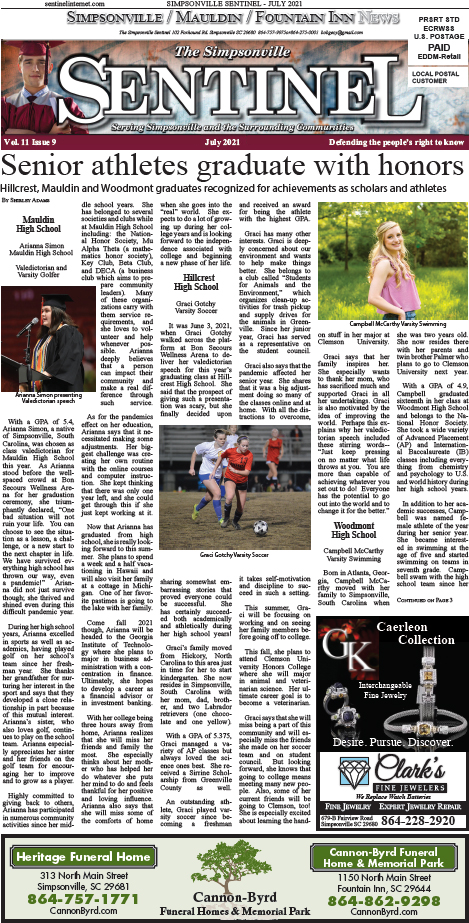Closest the Planets have been since 1623
Steve Wasser, a Mauldin resident, grew up in rural Illinois not far from St. Louis. Gazing at the nighttime sky has intrigued him all his life. His journey into amateur astronomy began with a travel scope that he has since sold. Two years ago, upon retirement, Mr. Wasser purchased a 6-inch computerized telescope that can be programmed to track celestial bodies. Then, just a year ago, he procured a used 4.5-inch telescope in Pickens County. Though an older model, it still works well. He says that for a relatively modest investment, an amateur sky-watcher can experience hours of enjoyment. “When you actually get to see the rings of Saturn, it’s like one of those wow moments,” declares Mr. Wasser.
One such wow moment will occur in December 2020. On December 21st, Jupiter and Saturn will align in what has been dubbed by newscasters as “the great conjunction” or “the Christmas star.” Jupiter travels around the sun every 12 earth years, while Saturn circles it every 30 years. Once every 20 or so years, their orbits catch up with each other, and the two planets appear closer together in the sky when viewed from earth. On winter solstice this year, the planets of Jupiter and Saturn will appear so aligned that they will almost look like one bright shining star even though they are still 450 million miles from each other.
Jupiter and Saturn last aligned so closely around 400 years ago in 1623, 7 years after Shakespeare’s death and during the time when Galileo first studied the skies with a telescope. On that occasion, the phenomenon could not be seen from earth. The last time when such a close alignment could be viewed from earth was almost 800 years ago in 1226. Genghis Khan was conquering large areas of Asia, and Europe had not yet entered its Renaissance period. Astronomers don’t expect Jupiter and Saturn to align this closely again until 2080, making this event on December 21st a once-in-a-lifetime opportunity for many of us.
There are several ways one can view this great conjunction involving Jupiter and Saturn and it is certainly something the family can explore and enjoy together.
This phenomenon can be seen with the naked eye. Best viewing will be in the hour after sunset, low on the horizon in the southwest sky. The planet Jupiter is not hard to find since it shines brighter than all the stars in the sky. Astronomy apps on smartphones can help in locating Jupiter and Saturn. On the evening of December 21st when the two planets appear closest together, Jupiter and Saturn will look like a double planet or a toppled-over snowman for a seasonal reference. The two planets will be just 0.1 degree apart, separated by 1/5 the diameter of a full moon or the thickness of a dime when held at arm’s length. Jupiter will be shining brighter than Saturn. Since the two planets will draw closer to each other up until December 21st and then move away from each other, it might be worthwhile to observe the sky a few days preceding and following the major event.
Serious observers may want to employ binoculars or a telescope. With a telescope, one will be able to see Jupiter and its four moons—Europa, lo, Callisto, and Ganymede. Then, in the same field, one should see Saturn with its rings as well. Viewing both these planets in one telescope field is a rare thing!
Mr. Wasser readily shares his passion for astronomy with others. Sometimes, he posts pictures of his telescope observations on social media so that his family can follow his findings. On one occasion, he set up his telescopes at a party for Mr. Terry Younkins, who was retiring from his position at Mauldin First Baptist Church. Attendees had a blast observing Jupiter and Saturn that night. Mr. Wasser says that kids love to gaze through the telescopes and will linger quite a while taking in the sights.
On December 21st, Mr. Wasser plans to have both of his telescopes set up with a camera attached to take pictures. In the meantime, he has been tracking the progress of the phenomenon, noting that the two planets appear closer together with each passing day. He says that eventually, probably before December 21st, both Jupiter and Saturn will be visible in the same telescope field. According to Mr. Wasser, the weather will determine how much can be seen on December 21st.
Sometimes, the ancients considered planetary alignments as bad omens that signaled impending calamity. Given this troubling year of 2020, it might be tempting to wonder what unfortunate event might be coming up next! On the other hand, what a shame it would be to miss out on such a rare and beautiful celestial show.
So, as December 21st draws near, don’t let the busyness of the Christmas season, the cares of this ongoing pandemic, or the divisiveness plaguing our nation distract you from looking up at that nighttime sky. Whether you view it with your naked eyes or use binoculars and telescope, please stop a moment to witness this event. And as you gaze up at that transient bright confluence of Jupiter and Saturn, think about how vast and grand this universe created by our God is, and how small and dependent we humans really are. Then, reflect upon the Bethlehem star that once led wise men of old to the place where they could worship baby Jesus, God wrapped in flesh. The true wonder is that God would come into this world as one of us.
To watch a live stream of the “great conjunction,” check out this site: The Great Conjunction of 2020 | Jupiter and Saturn Closest in 400 Years – YouTube


